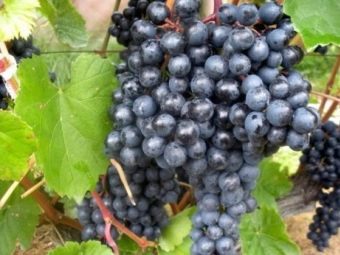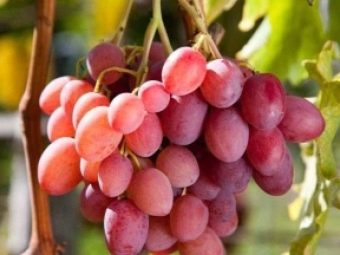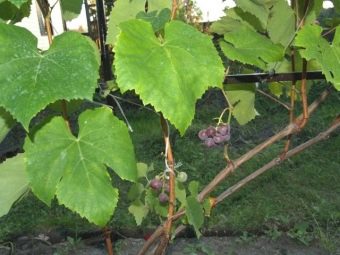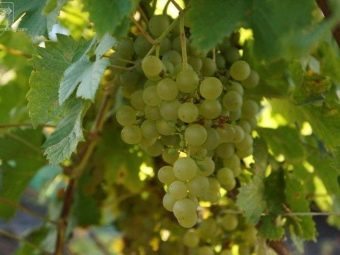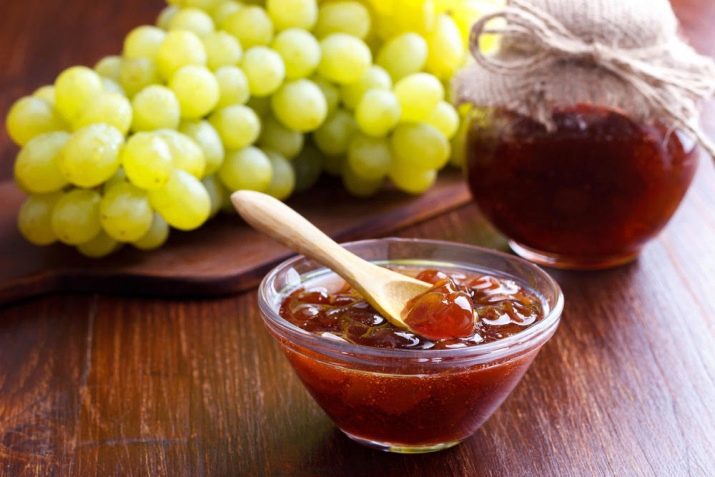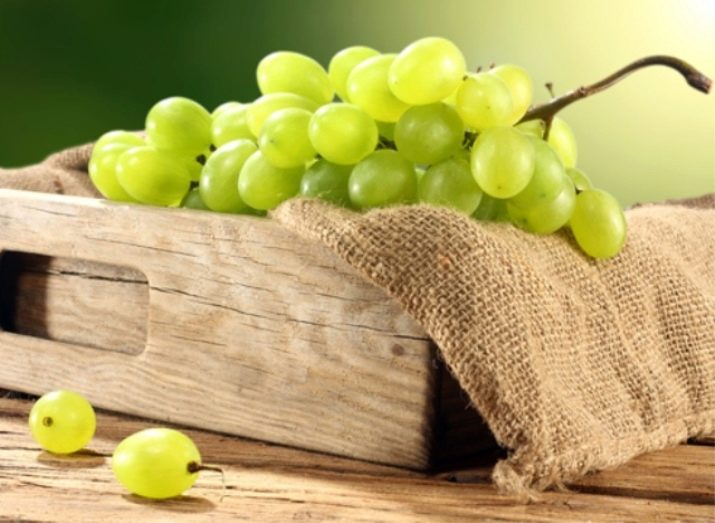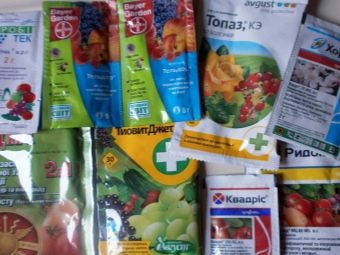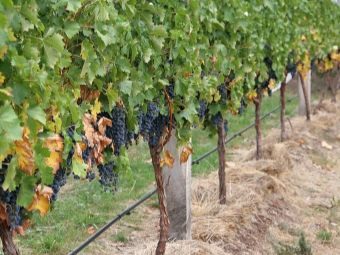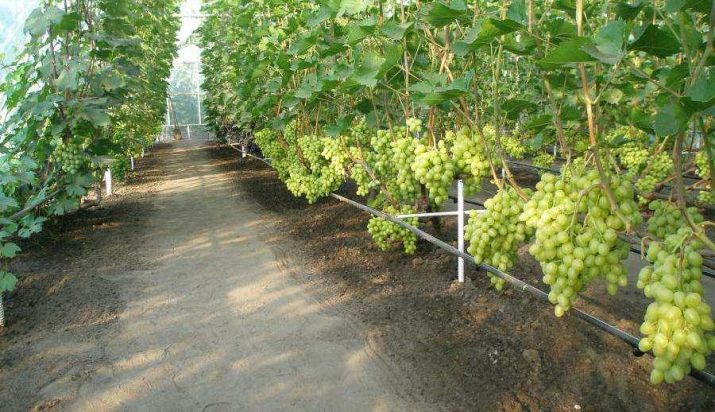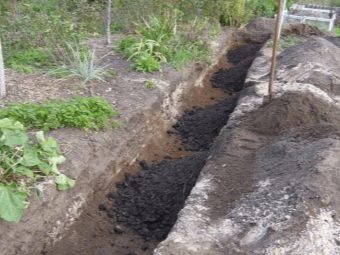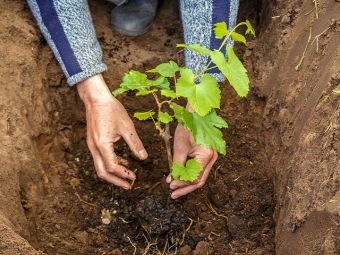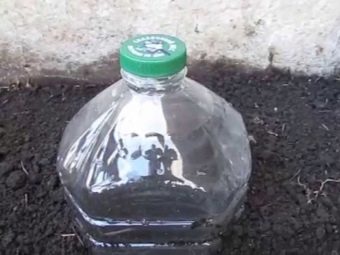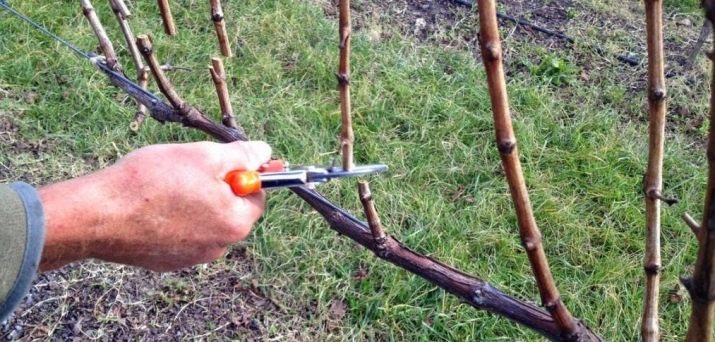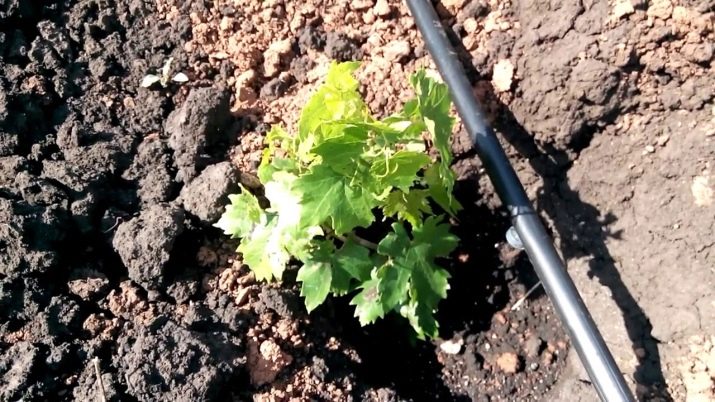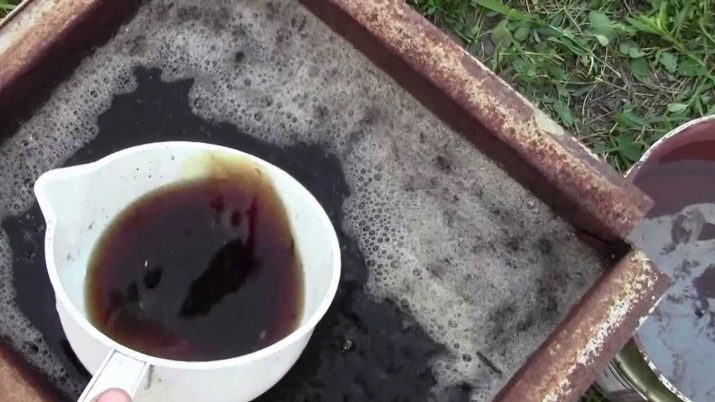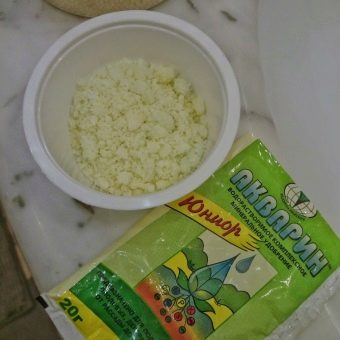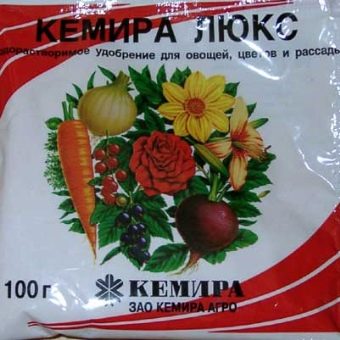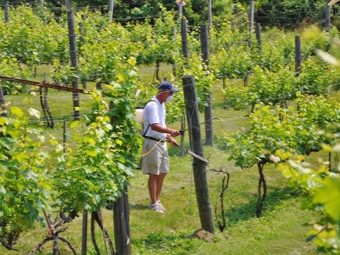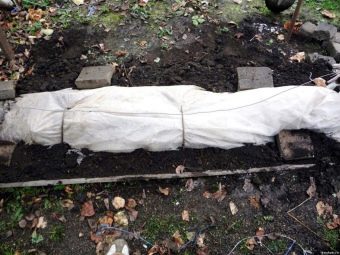Grapes "Beauty of the North": characteristics and characteristics of planting
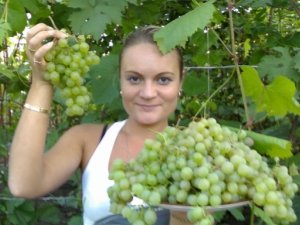
The grapes "Beauty of the North" is considered a very popular variety in Russia and neighboring countries.The demand for the species is due to high frost-resistant properties, due to which there is the possibility of growing crops in cold climatic zones in which most of the country is located.
Variety description
The grapes "Beauty of the North" was bred as a result of the breeding work of Russian specialists. Initially, the variety was called “Olga”, but later it received the second name - “Beauty of the North”, under which it underwent variety trials since 1977, and since 1994 it has been entered into the State Selection Register. Parent couple were famous species "Dawn of the North" and "Tayfi pink", which gave the new variety their best properties, including high yield, sweet taste and early maturation.
The grapes are characterized by high rates of ripening shoots, often reaching 95%, the ability to tolerate winter temperatures of up to -26 degrees, and a large mass of the bunch, an average of 500 g. Due to the fact that the flowers have both stamen and pistil, the plant is self-pollinating and does not need additional planting of bushes.
Grape bushes are characterized as vigorous, with large, weakly dissected leaves that have a light green thin leaf blade. Annual plant growth can reach three meters. The clusters are friable and have a conical shape, the berries are distinguished by round shapes, an average size of 2x2 cm and a weight of 5 g. Light green fruits have a thin firm skin, juicy flesh and have a sweet, slightly tart taste.
The number of seeds in the berry is 2-4 pieces, and the taste characteristics are estimated at 8 points on a ten-point scale. The concentration of folic acid in the berries is slightly increased, and can reach 0.23% per 1 mg of the mass. In the sun, the berries may become yellowish and even pinkish, the shape of the berries may also vary somewhat and take oval shapes.
After full ripening, fruits can remain on the vine for a long time, without losing their taste properties or being damaged. The transportability of fruits is medium, but when transported for short distances, the berries retain their original shape well, do not crumple and do not crack. The fruits are capable of accumulating sugar, so the longer the berries will be on the vine, the sweeter the harvest will be.
Each berry contains up to 17% sugar, while the average acidity is only 5.4 g / l.
The variety is considered a table type, and therefore it can be used to make jams, marmalade, compotes, jams and dessert wines.
Advantages and disadvantages
Increased consumer demand and a huge amount of positive reviews about the “Krasa Severa” grapes are due to next to the undeniable merits of this variety.
- High yield. With industrial cultivation, it is possible to harvest up to 100 c / ha. The plant reaches the highest yield 3 years after planting.
- Short growing season and fast ripening allow you to harvest a full crop before the onset of cold weather.
- Increased frost resistance provides ample opportunities for growing varieties in any climate zone. Berries are not prone to cracking from an excess of moisture and, being on a bush, are able to retain their original shape, structure and color.
- Strong immunity to the formation of gray rot favorably distinguishes the "Beauty of the North" from other early ripening species.
- The possibility of long-term storage and transportation.
The disadvantages of plants include low resistance to fungal diseases, including oidium and mildew, susceptibility to the negative effects of insects and birds, as well as a certain tendency to the appearance of pea. In order to avoid the occurrence of diseases, the bushes should be systematically treated with Topaz, Tiovit Jet or Ord.
Excessive moisture, for example, in the period of prolonged rains, may damage the peel. However, the above negative factors are easily removable. In order to prevent diseases, preventive measures should be regularly taken, ultrasound will help to scare away insects and birds, and it will be possible to cope with excessive moisture with the help of mulching techniques.
Agrotechnology
Grapes "Beauty of the North" is adapted for growing in areas with unfavorable climate. However, to ensure high yields and timely ripening of berries, one should carefully select a place for planting.
Site preparation
The site should be in the sun and be well protected from the wind. Even a slight shading of the plant adversely affects its growth and development, leads to a decrease in immunity, an increase in the aging time, a deterioration in the quality of the clusters and the appearance of fungal diseases. When choosing a place, it is necessary to consider the relief of the site. Placing the plant in the valley is not recommended. This is due to the accumulation of cold air in the surface space and its negative impact on the growth of shoots.
It is undesirable to plant grapes on the northern side of the slopes and near highways, due to the high compaction of the soil and its tendency to freeze. The most favorable environment for growing grapes are sandy and sandy soils. Grape rows should be located in the direction from north to south. This arrangement will contribute to uniform illumination of plants throughout the daylight hours.
Planting grapes is recommended in the first decade of June.
After the place for planting grapes is selected, you can start digging a trench 30-40 cm deep. At the bottom of the trench you need to dig holes 0.8 meters by 0.8 meters at a distance of one and a half meters from each other. The bottom of the pits need to lay out a gravel mixture, on top of which lay the branches and splinters. Then you need to mix two buckets of humus and half a bucket of wood ash, adding there 300 g of phosphorus-potassium fertilizers.
The resulting mixture is placed on the formed drainage and well compacted. When planting crops on loose soils, excavated trenches are recommended to be kept for 2-3 weeks for complete shrinkage of the soil.
Disembarking
Once the landing site is fully prepared, you can begin planting. To do this, young shoots should be released from the packaging, and the roots shake off the ground and straighten. Then the plant should be placed in the pit and, keeping it in a strictly upright position, proceed to falling asleep ground. The soil should be poured until 30-40 cm is left up to the edge of the trench. Then, the soil should be carefully tamped down, and the seedling should be shed abundantly, consuming 15 liters of water per bush.
In order for the young sprout to settle down faster in a new place, it is recommended to cover the plant on top with a plastic five-liter jar, with a pre-cut neck. This will protect the sapling from the wind and prevent the rapid evaporation of moisture from the root zone. It is recommended that a tappler be installed at the planting stage, since its later installation may disturb young plants and adversely affect their growth and development. The simplest version of the design will be dug posts on the sides of the trench with four rows of soft wire stretched over them.
Care
Throughout the growing season, the grapes need regular care, which consists of timely weeding, pruning, loosening and watering. This is especially important the first three years after planting. It is at this time that the formation of the vine occurs, on which the yield of the species directly depends.
Pruning
In the first year of growth, it is recommended that all stepchildren be removed, leaving the two strongest escapes, and in the fall, trim their tops by 30 cm. In the second year, four shoots should be left, regularly removing their stepsons from them.Garter grown plants to the trellis should be made at an angle of 45 degrees.
At the end of the summer, it is necessary to prune the shoot at a height of 18-22 leaves. This will remove undigested processes, will promote the formation of large clusters and ensure a good harvest. The final pruning should be carried out in the first decade of October.
Top dressing and watering
The variety needs abundant watering, especially in the first month of summer. Watering of grapes should be done in the morning or evening, as during the daytime water droplets that fall on the leaves can cause severe burn of the leaf plates and lead to their loss. A well-established drip irrigation system, in which the risk of water on the leaves is completely excluded.
In addition to watering, the grapes should be regularly fed. This is especially true for plants growing on depleted and weakened soils. Feeding can be done in two ways.
The first is to apply fertilizer directly under the base of the shoot and is called root. You can prepare a solution for such feeding yourself. To do this, 10 days before flowering, it is necessary to mix chicken dung (2: 1) with water and dilute it five times with water. To the resulting composition you need to add 20 g of superphosphate and 15 g of potassium salts, mix thoroughly and pour the plant with this mixture, spending on each bush and a half buckets.
After feeding the plants should be plentifully shed with clean water. Fertilization only in small concentrations can be repeated in the period when the berries reach the size of a pea.
The second method of feeding is called foliar and consists in spraying mineral substances on the stem and leaves of the plant. They produce top dressing three times: the first time - just before flowering, the second - after the start of the formation of ovaries, and the third - at the initial stage of ripening berries. Between the basal and foliar dressing should take at least 15 days.
For irrigation, complex additives are used, the main component of which are trace elements necessary for plants. Among the ready-made formulations, preference can be given to "Akvarin", "Novofert" and "Kemire", which have proven themselves as fertilizers and are most actively used by experienced growers.
Preparing for the winter
Harvesting should be done before September 15-20, after which you need to untie the shoots from the trellis and cut off weak shoots. Then, in October, it is necessary to cut the plant again and carefully clear the soil near the roots. Further, it is recommended to spray the shoots and the ground with blue vitriol, sprinkling with wood ash. Remote stems need to be tied in bundles and put in a trench, evenly distributing them along the bottom. The bunches should be decomposed into a vine, covered with spruce branches and boards, and wrapped with special material on top.
Due to the high yield and the possibility of growing grapes in the harsh conditions of the Russian climate, the variety “Krasa Severa” quickly gained popularity and became one of the most sought-after species both among beginning gardeners and experienced growers.
Review of grapes "Beauty of the North" see below.

